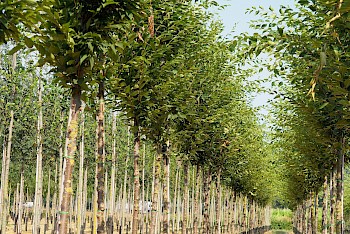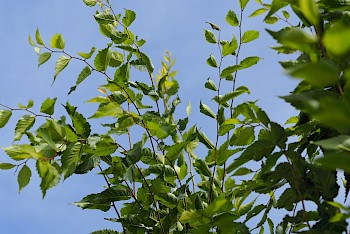10m - 15m
6m - 7m
Half-open
Autumn colour
April/ May
Brassy red
Humous and loamy
The Zelkova is part of the elm family and is also known as a mock elm. There are some similarities, like the leaves, which, like those of the elm, alternate on the twigs. This selection is not to barely susceptible to the elm disease. It is a super healthy tree, which suffers little from vermin and infections.
The ovoid leaves are oblong, up to about 13 cm in length, with a serrated edge. In autumn, the leaves turn a rusty red. A truly marvellous sight. The alternating leaves on the reddish-brown twigs make the whole image look refined. The greyish brown bark flakes in small sections, so you can see the orange/brown bark underneath. The bloom in April/May is inconspicuous, just like the small, bean-like fruits that follow afterwards.
The Japanese Zelkova, Zelkova serrata, is not frequently used along streets because the crown is generally too low and spreads too wide. Zelkova serrata ‘Fastigiata’, on the other hand, has an upwards-growing and relatively narrow crown, up to 6-7 m in width. Zelkova serrata ‘Fastigiata’ grows optimally in humus-rich, loamy soil. However, it can also handle somewhat poorer and dryer soil. Since the tree can handle pavement, it is a good Zelkova selection to use along streets.
This special tree can finally be applied more often, not only in parks but also along streets, thanks to the narrow, upwards nature of Zelkova serrata ‘Fastigiata’.

